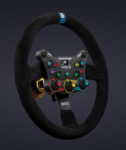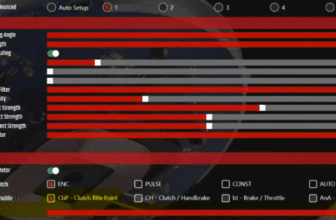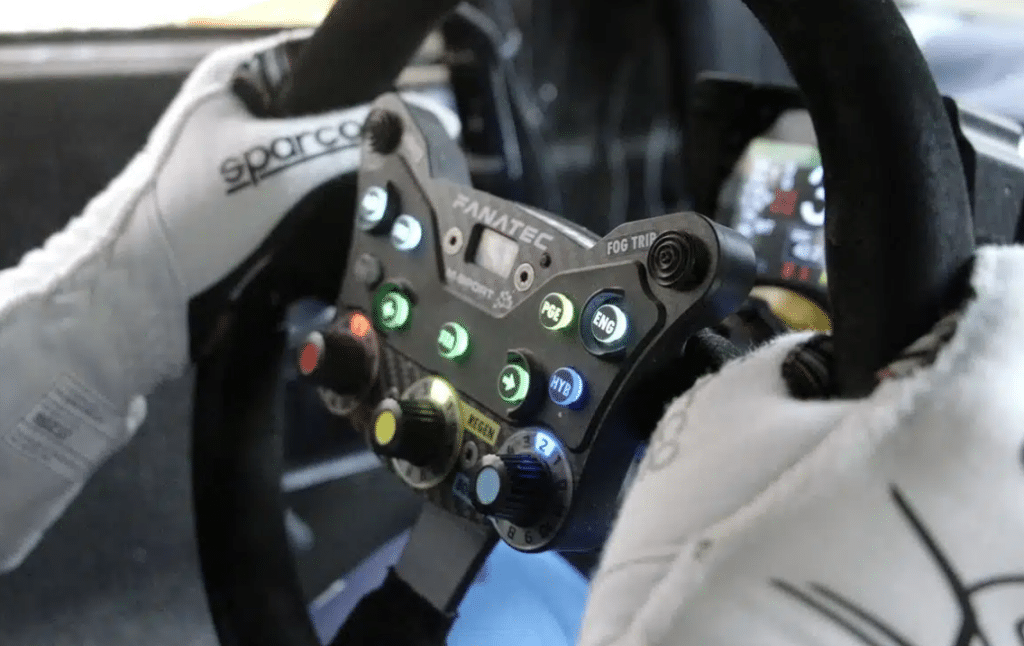
Immerse yourself in the heart of a rally stage as you discover the buttons on the Fanatec Podium module. An immersive experience aboard the fearsome Ford Puma WRC. With this marriage of cutting-edge technology and mechanical power, every button on the steering wheel becomes a gateway to exceptional performance. We take you on a journey into the cockpit of the Ford Puma WRC! In this in-depth exploration, we’ll detail the functionality of each button. Revealing how these controls become your direct interface with the power of this M-Sport rally machine.
Let’s go…
Let’s discover the procedures involved in mastering the Fanatec Podium Rally module in the thrilling context of a real rally. Imagine you’re about to tackle a special stage, and every moment counts to ensure optimum performance. From preparation, to the start, to the triumphant finish. We’ll guide you through these crucial procedures, enabling you to maximize your driving experience in the Ford Puma WRC. Ready to embark on this immersive adventure? Hold on tight, because we’re about to decipher the key stages of your virtual rally day.
Tuning up
Before leaving the Parc Fermé, the engineer calibrates your mapping using the 
Increase the boost when you have straight sections or steep climbs, requiring maximum power to accelerate quickly. This will enable you to take full advantage of the Ford Puma WRC’s power in situations where speed is crucial. The FIA strictly regulates the system’s power at every stage and every “boost event”. This is non-negotiable for the teams.
The hybrid drivetrain must be charged on the road, using the engine as a generator. This means that teams must calculate their state of charge at each stage start. This goes beyond simply managing fuel levels. It’s important to note that the regeneration process also takes place during a rally stage. This enables continuous energy recovery, especially during braking phases. And it helps optimize the overall efficiency of the hybrid system.
-
Finding the right balance between boost and regeneration is essential, taking into account the specific layout of the stage. It’s crucial to adjust the settings according to the characteristics of the road to maximize energy efficiency while maintaining optimum performance.

Starting the special
In wet and rainy conditions, such as the RAC rally, pre-start preparation becomes even more important. To ensure optimum visibility, first activate the 


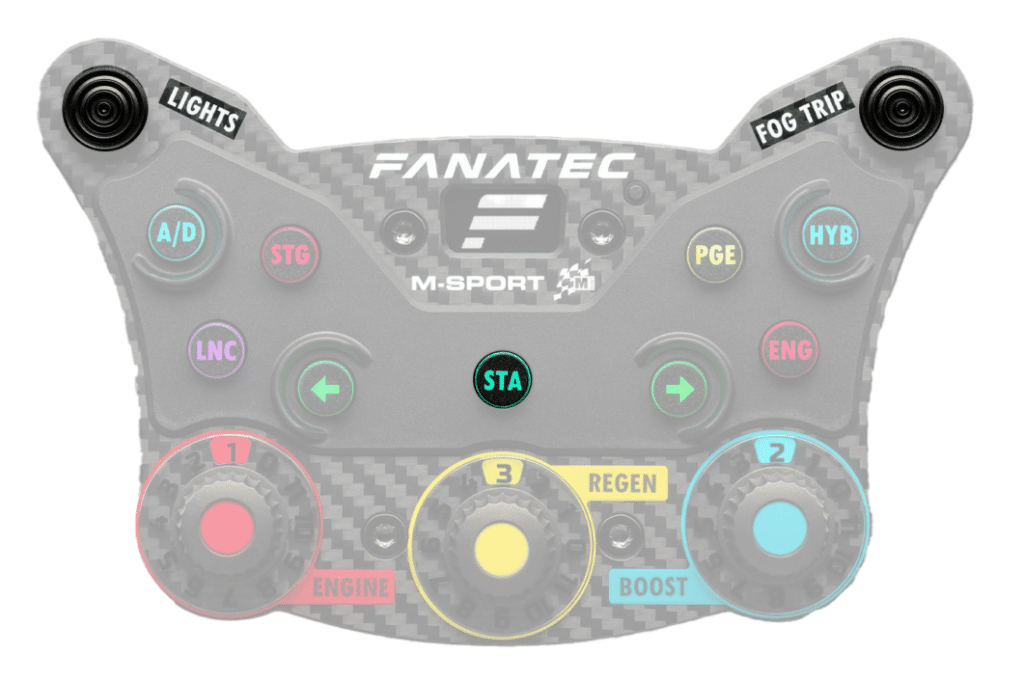
Once the headlights and fog lights have been switched on, it’s time to prepare the vehicle for launch. Activate “power max” mode by pressing the 
After pressing the 

During the stage
During the stage, the 
It’s a bit like placing virtual post-it notes at strategic points on the stage. If a problem occurs, or if you identify a particular point requiring further attention, press the 
The 

The 
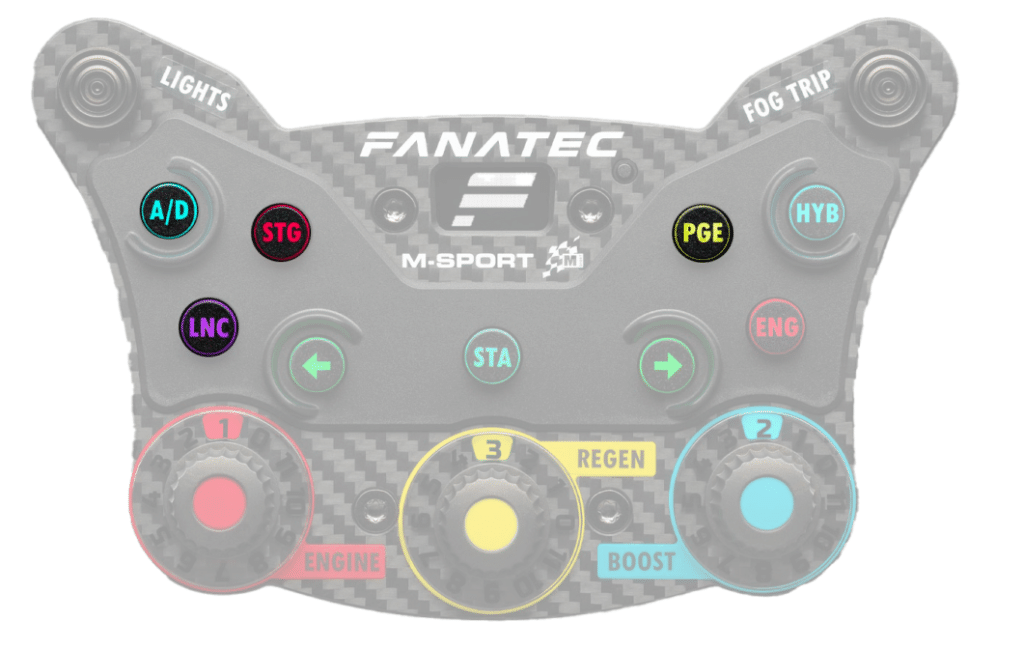
Scratch in your pocket, back to the closed park
Having covered the kilometers at full speed, the special stage is drawing to a close, and the moment of transition to the Parc Fermé has arrived. At this crucial moment, you press the 
During the liaison between stages, respect for the highway code is imperative. Drivers must obey all traffic regulations and behave in a safe manner on the road. This includes using turn signals! So use the two green arrows to signal changes of direction.

Bonus: technical info on hybridization
Since 2022, World Rally Cars have been equipped with a rechargeable hybridization system. This introduces one of the many changes in the new regulations. With full support for the hybrid system, the new Rally1 race cars generate around 530 combined horsepower. The generator unit with integrated battery, weighing 100 kilograms, is positioned on the rear axle. It delivers up to 100 kW of power (approx. 136 hp).
The FIA strictly regulates the system’s power at each stage and at each “boost event”, which is non-negotiable for the teams. Although they can adjust the ECU parameters in accordance with the regulations, the battery must “last” the entire stage. This limits e-boost on long stages and favors it on short ones.
At the start of a stage, Rally1 models can benefit from their maximum output. Subject to tire grip and weather conditions, of course. As with production hybrids, the battery recharges with each press of the brake.
The rechargeable hybrid drivetrain developed by Compact Dynamics for WRC cars limits costs and competitive advantages. It should be noted that the battery is charged in each service park via a dedicated charger, in 30 to 45 minutes, without reaching its full capacity.
The battery is charged between special stage connections using the internal combustion engine as a generator. This method means that teams have to calculate their state of charge at each stage start. Furthermore, teams must take these calculations into account when managing fuel levels to optimize their vehicle’s performance and energy efficiency throughout the competition. This complex strategy requires meticulous planning to ensure optimum use of electrical power, while guaranteeing sufficient range for each special stage.
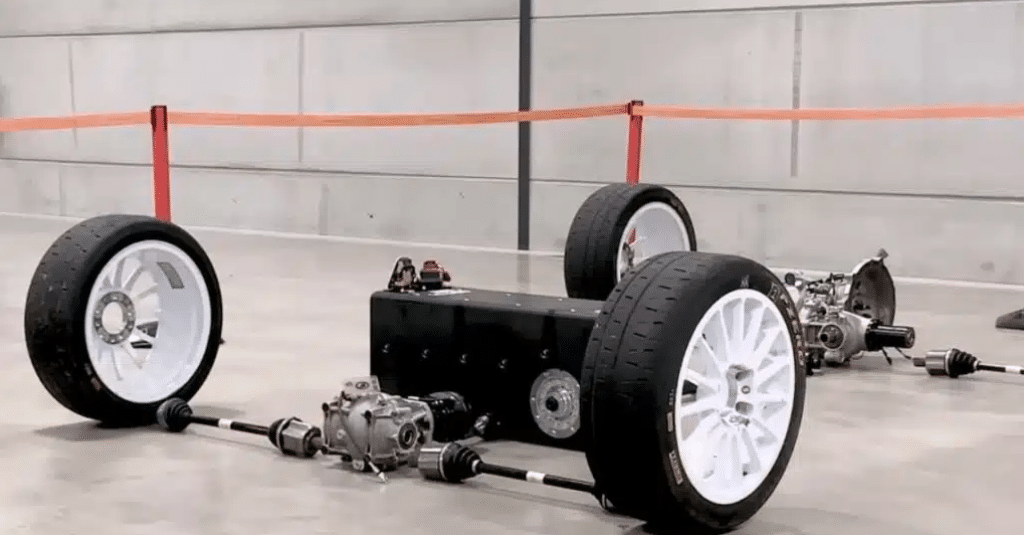
Thank you M-Sport
A huge thank you to our contact at M-Sport, who was generous enough to share his expertise and provide us with a real instruction manual for the Ford Puma WRC. His precise information was essential in clarifying our understanding and enabling us to present this article to you.
The Ford Puma WRC is an extremely complex machine. Seeing the world of sim racing get closer to it through this magnificent Module Fanatec Podium Rally enhances our passion! We look forward to future collaborations with German manufacturer FANATEC.

 Increase the boost when you have straight sections or steep climbs, requiring maximum power to accelerate quickly. This will enable you to take full advantage of the Ford Puma WRC’s power in situations where speed is crucial. The FIA strictly regulates the system’s power at every stage and every “boost event”. This is non-negotiable for the teams.
Increase the boost when you have straight sections or steep climbs, requiring maximum power to accelerate quickly. This will enable you to take full advantage of the Ford Puma WRC’s power in situations where speed is crucial. The FIA strictly regulates the system’s power at every stage and every “boost event”. This is non-negotiable for the teams.  The hybrid drivetrain must be charged on the road, using the engine as a generator. This means that teams must calculate their state of charge at each stage start. This goes beyond simply managing fuel levels. It’s important to note that the regeneration process also takes place during a rally stage. This enables continuous energy recovery, especially during braking phases. And it helps optimize the overall efficiency of the hybrid system.
The hybrid drivetrain must be charged on the road, using the engine as a generator. This means that teams must calculate their state of charge at each stage start. This goes beyond simply managing fuel levels. It’s important to note that the regeneration process also takes place during a rally stage. This enables continuous energy recovery, especially during braking phases. And it helps optimize the overall efficiency of the hybrid system. Finding the right balance between boost and regeneration is essential, taking into account the specific layout of the stage. It’s crucial to adjust the settings according to the characteristics of the road to maximize energy efficiency while maintaining optimum performance.
Finding the right balance between boost and regeneration is essential, taking into account the specific layout of the stage. It’s crucial to adjust the settings according to the characteristics of the road to maximize energy efficiency while maintaining optimum performance. 
